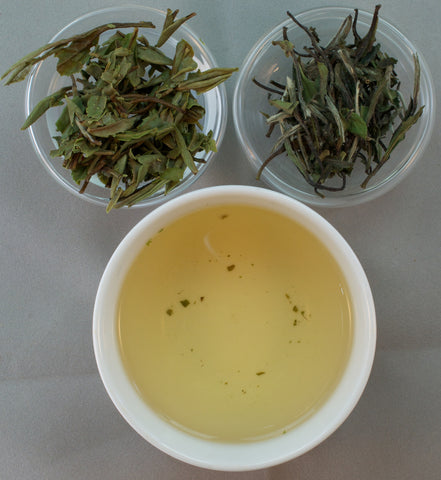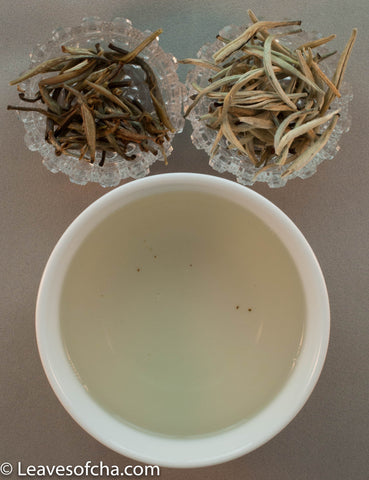In the nearly 100 years that Satemwa has been cultivating tea plants, they have made it a priority to improve the standard of living for their employees and their families. From their unique terroir, Satemwa is able to produce some unique orthodox white, green, oolong, black and dark teas. Experimenting with different local cultivars and playing around with some traditional and new processing techniques, with trial and error and loads of tasting, they have produced great and unusual teas. The special cultivars, the unique climate and the specialized processing techniques make these teas exceptional.
Zomba Pearls is an example of what a white tea can become in the hands of skilled and passionate tea makers. The hand shaped pearls (or crickets!) are beautiful before, during, and after infusion. As the rolled tea opens up, it reveals the beautiful leaves used to create this tea. I am pleased that we are seeing teas from other places in the world made with the same care and love that we see in China’s specialty teas.
Provenance:
-
Origin: Satemwa Tea Estate, Thyolo Mountain, Shire Highlands - Thyolo District, Malawi
-
Grower/Teamaster: Alexander Catchart Kay
-
Elevation: 1,000m (3,280ft)
-
Harvest Date: Rainy Season (Spring) 2020
-
Cultivar: Zomba
-
Cultivation: Conventional - Herbicides only, no pesticides. Satewa are also Fair Trade Certified, UTZ+ and Rain Forest Alliance Certified.
-
Plucking Standard: Hand plucked by skilled tea workers
-
Processing Notes: Picked and then hand rolled by skilled tea workers.
-
Nickname: Cricket Tea.
-
History/Pedigree: Established in 1923, Satemwa’s own third generation tea maker, Alexander Kay has been crafting and cultivating their teas with love and passion for his artisanal tea.
Brewing Suggestions1:
-
Water: 185˚-190˚F
-
Tea: 2g per 4oz of water (3-4 pearls)
-
Infusion: 3-4 minutes with multiple infusions to allow pearls to open and develop flavor
Tasting Notes:
- The dry leaf smells rich and tart. The liquor is rich and buttery smooth, with notes of freshly steamed vegetables, roasted squash/pumpkin, and a tangy lemon tail note.
1 Brewing suggestions are just that. Try it the suggested way then experiment. Some tea drinkers like to use slightly hotter and longer times for each subsequent infusion. Play with your brewing parameters to get the best flavor as the tea opens up; enjoy the change in complexity and flavor over the infusions.
2 Weighing your tea is always the best way to control your dosage. Here I have provided approximate quantities for convenience but the pearls obviously vary in weight.



